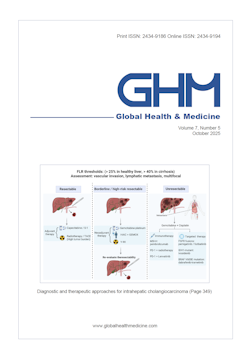Global Health & Medicine 2024;6(5):333-338.
HIV disease progression among heterosexually-infected individuals before the introduction of universal ART in China: A linear mixed-effects model
Tang L, Chen FF, Ling Q, Li PL, Ge L, Cai C, Tang HL, Lv F, Li DM
In 2016, China introduced universal antiretroviral therapy (ART) for all HIV-infected individuals regardless of CD4 cell count. However, the natural history and rate of CD4 count decline among heterosexually-infected individuals remain uncharacterized. Analyzing national surveillance data can address this gap and shed light on the pathogenesis of HIV in this population. We used a linear mixed-effects model to assess CD4 trajectory over time before ART initiation and estimated the median time from HIV seroconversion to reaching CD4 thresholds of < 500, < 350, and < 200 cell/mm3. From the Chinese HIV/AIDS Comprehensive Response Information Management System, 59,085 eligible individuals were identified, with 113 having data to estimate the date of HIV seroconversion. The linear mixed-effects models estimated an intercept of 23.64 (95% confidence interval [CI]: 22.41 to 24.87) and a slope of -1.32 (95% CI: -1.34 to -1.30) for males, and an intercept of 22.70 (95% CI: 21.00 to 24.40) and a slope of -1.29 (95% CI: -1.31 to -1.27) for females. The estimated median times from HIV seroconversion to reaching CD4 count thresholds of < 500, < 350, < 200 cells/mm3 were 0.97, 3.74, and 7.20 years for males, and 0.26, 3.09, and 6.48 years for females, respectively. Males consistently took longer to reach these CD4 count thresholds compared to females of the same age group. Older individuals (≥ 40 years) reached CD4 thresholds faster than younger individuals (15-29 years), indicating more rapid disease progression in older people living with HIV.
DOI: 10.35772/ghm.2024.01030







